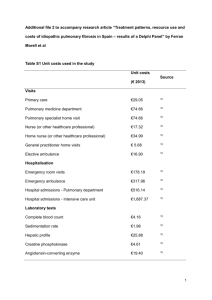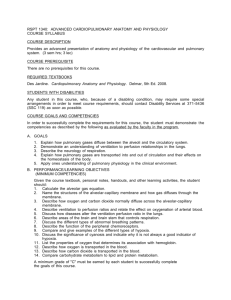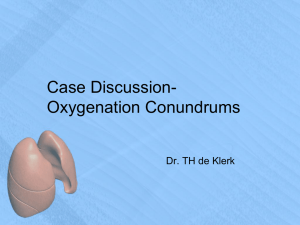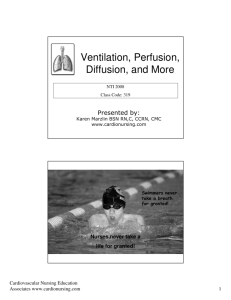Consortium Objectives Day 2
advertisement
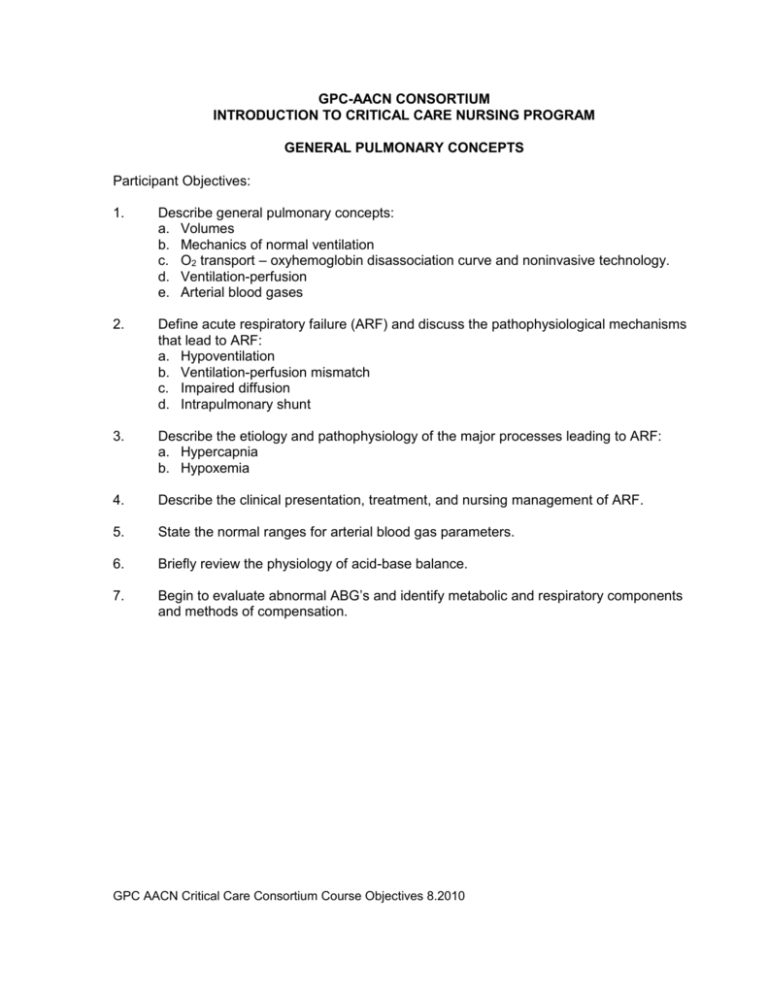
GPC-AACN CONSORTIUM INTRODUCTION TO CRITICAL CARE NURSING PROGRAM GENERAL PULMONARY CONCEPTS Participant Objectives: 1. Describe general pulmonary concepts: a. Volumes b. Mechanics of normal ventilation c. O2 transport – oxyhemoglobin disassociation curve and noninvasive technology. d. Ventilation-perfusion e. Arterial blood gases 2. Define acute respiratory failure (ARF) and discuss the pathophysiological mechanisms that lead to ARF: a. Hypoventilation b. Ventilation-perfusion mismatch c. Impaired diffusion d. Intrapulmonary shunt 3. Describe the etiology and pathophysiology of the major processes leading to ARF: a. Hypercapnia b. Hypoxemia 4. Describe the clinical presentation, treatment, and nursing management of ARF. 5. State the normal ranges for arterial blood gas parameters. 6. Briefly review the physiology of acid-base balance. 7. Begin to evaluate abnormal ABG’s and identify metabolic and respiratory components and methods of compensation. GPC AACN Critical Care Consortium Course Objectives 8.2010 GPC-AACN CONSORTIUM INTRODUCTION TO CRITICAL CARE NURSING PROGRAM AIRWAY MANAGEMENT & MECHANICAL VENTILATION Participant Objectives: 1. Describe the use of the following therapeutic modalities in patients with compromised ventilation and oxygenation: a. Oxygen therapy b. Pulmonary hygiene and positioning c. Bronchodilators, steroids (inhaled and IV), latest drug therapy d. Noninvasive ventilatory technology (CPAP/Bipap) e. Intubation and mechanical ventilation 2. Describe evidence based strategies for prevention of Ventilator Associated Pneumonia (VAP). 3. Discuss the indications, contraindications, and the complications of mechanical ventilation (include aspiration and barotrauma). 4. Describe the difference between pressure and volume modes, including assessment of the patient’s response to these modes. 5. Define and contrast the following modes of ventilation: Assist-Control, IMV, SIMV, pressure support, pressure control, pressure regulated volume control, PEEP, CPAP, PIP and inverse I:E ratio. 6. Discuss the basic ventilator parameters that are necessary for the above modes, specifically, tidal volume (Vt), minute ventilation, respiratory rate, and flow. 7. Identify and problem solve ventilator alarms and ventilator failure. 8. Discuss how changes in compliance and airway pressure affect the mode selected in patients undergoing mechanical ventilation. 9. Discuss the proper procedure to follow when suctioning a ventilated patient including a patient on PEEP. 10. Discuss mechanical ventilation weaning process, including the importance of RT/RN collaboration and what data is utilized to assess readiness to wean, including spontaneous breathing trial (SBT) and daily awakening trial (DAT). 11. Discuss how to prepare the equipment and patient for extubation. 12. Identify the signs of immediate and delayed pulmonary compromise in a recently extubated patient and the potential treatments. GPC AACN Critical Care Consortium Course Objectives 8.2010 GPC-AACN CONSORTIUM INTRODUCTION TO CRITICAL CARE NURSING PROGRAM PULMONARY CRITICAL CARE Participant Objectives: 1. Compare and contrast bronchitis, emphysema and asthma in terms of the following: a. Etiology b. Pathophysiology c. Clinical presentation d. Treatment modalities e. Nursing management 2. Describe risk assessment and prevention strategies for Venous Thromboembolism (VTE). 3. Describe the etiology and pathophysiology of pulmonary emboli including the impact on pulmonary and hemodynamic function. 4. Discuss medical and nursing management of a patient with pulmonary emboli. 5. Discuss the etiology and identification of the patient with adult respiratory distress syndrome (ARDS). 6. Describe the pathophysiology of ARDS. 7. Discuss the medical and nursing interventions associated with ARDS including positioning (including continuous lateral rotation therapy and proning), role of sedation, early nutrition, and work of breathing. 8. Discuss benefits and components of early mobility programs. GPC AACN Critical Care Consortium Course Objectives 8.2010




